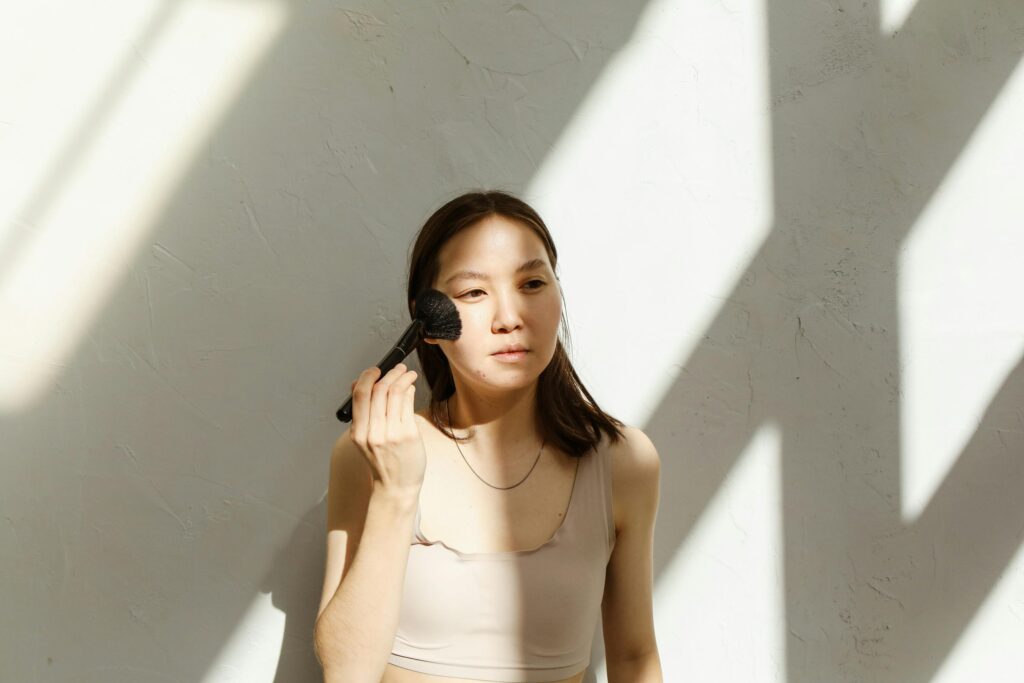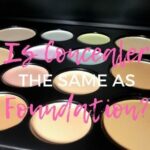Concealer is a versatile tool in makeup routines, primarily used to cover imperfections and brighten certain areas of the face. While lighter concealer is often used to highlight, darker concealer can be strategically applied to contour and enhance your natural features. Knowing where and how to apply darker concealer is key to achieving a balanced makeup look.

Struggling to enhance your facial features with makeup? Discover how darker concealer can be the game-changer in your routine. Learn the best techniques for a flawless, contoured finish by reading more.
1. The Role of Darker Concealer in Makeup
While lighter concealers are typically used to brighten the skin and conceal flaws, darker concealers serve a different, yet vital purpose in makeup. Instead of focusing on covering blemishes, darker concealers are used to add dimension and depth to your face. By applying a darker shade to specific areas, you can sculpt and define your features, creating a more structured look.
However, concealers are typically used to hide imperfections, whereas contour products, including darker concealers, serve a different purpose. Contour products are designed to create dimension and enhance the natural shape of your face. This distinction is essential for achieving a well-defined and sculpted look.
2. Key Areas to Apply Darker Concealer
Following are the key areas where darker concealer can enhance your facial features:
Cheekbones
Applying darker concealer just beneath the cheekbones can give the illusion of higher, more sculpted cheekbones. For a natural-looking contour, use a stippling brush to apply and gently blend the concealer upwards towards the cheekbone.
Jawline
Enhance your jawline by applying darker concealer along its edges. This technique adds definition and helps shape the lower part of your face. Use a contour brush to apply the concealer and blend it downwards towards the neck to avoid any stark lines.
Temples
Applying darker concealer on the temples creates a slimming effect and adds depth to the sides of your face. This is particularly useful for balancing round or wide face shapes. Use a fan brush to apply the concealer and blend it towards the hairline for a smooth transition.
Sides of the Nose
To create the appearance of a slimmer nose, apply darker concealer along the sides. This technique narrows the nose by adding shadow. Use a small, precise brush to apply the concealer, then blend the edges with a clean brush or sponge to ensure a seamless look.
Hairline/Forehead
Apply darker concealer along the hairline or around the perimeter of the forehead to balance face shapes, making a larger forehead appear smaller or visually shortening the face. Use a contouring brush to apply the concealer and blend it into the hairline to achieve a natural, harmonious finish.
3. Best Practices for Applying Darker Concealer
Blending is Key
Blending is crucial when applying darker concealer to ensure a smooth, natural finish. Make sure to blend thoroughly to eliminate any visible lines and create a seamless transition between the concealer and your foundation.
Less is More
Start with a small amount of darker concealer and build up gradually as needed. Applying too much product at once can make it difficult to achieve a natural look, so layer it slowly for the best results.
Use the Right Tools
The tools you use can significantly impact the application of darker concealer. Sponges are great for a soft, blended finish, brushes offer precision, and your fingers can provide warmth for better blending. Choose the tool that best suits your desired look and technique.
Choose the Right Shade
Selecting the correct shade of darker concealer is essential for a natural contour. Opt for a shade that is a few tones darker than your skin tone to create realistic shadows. Test different shades to find the one that enhances your features while still blending seamlessly with your foundation.
4. Common Mistakes to Avoid
Applying Too Much Product
Using an excessive amount of darker concealer can result in an unnatural look. Start with a small amount and build up gradually to avoid overwhelming your features and creating harsh lines.
Not Blending Properly
Failing to blend your concealer thoroughly can leave noticeable lines and patches. Take the time to blend the product seamlessly with your foundation for a smooth, natural finish.
Using a Shade That’s Too Dark
Choosing a shade that’s excessively dark can make the contouring look stark and unrealistic. Select a shade that is just a few tones darker than your natural skin tone to maintain a natural appearance.
Placing the Concealer in the Wrong Areas
Applying darker concealer to incorrect areas can lead to an unbalanced look. Ensure you apply it to the strategic areas like under the cheekbones, along the jawline, and on the temples for effective contouring.
Product Recommendations
For effective contouring, consider high-quality concealers that offer a range of shades. Brands like Fenty Beauty, NARS, and Tarte are known for their excellent contouring concealers.
Personal favorites often include Fenty Beauty’s Pro Filt’r Instant Retouch Concealer and NARS’ Radiant Creamy Concealer, both praised for their blendability and range of shades.
Popular items in the makeup industry also include the Maybelline Fit Me Concealer for a budget-friendly option that still performs well.
Conclusion
Applying darker concealer correctly is essential for enhancing your facial features and achieving a sculpted, defined look. By mastering the art of contouring with darker concealer, you can add dimension and balance to your face, highlighting your natural beauty. Don’t be afraid to experiment with different techniques and shades to find what works best for you, and enjoy the process of creating a naturally contoured appearance.
Have you tried using darker concealer for contouring? Share your experiences or any tips you have in the comments below! For more beauty tips and makeup tutorials, be sure to follow our blog and stay updated with the latest in makeup techniques.






